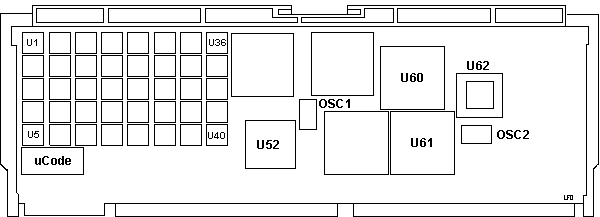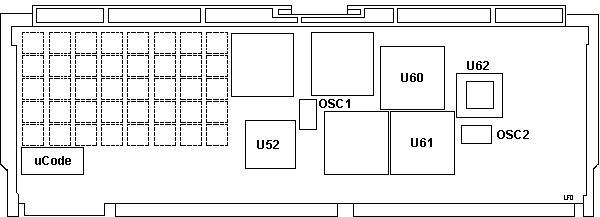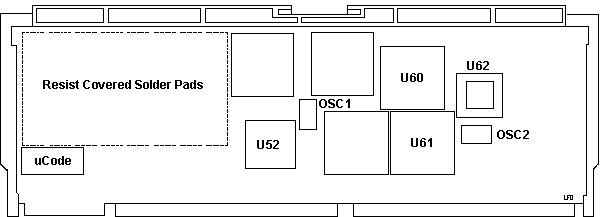|
Advanced Processor Board, model 115 P/N 08F3369 no FRU 
20Mhz Motorola 68881 floating-point processor
Advanced Processor Board, model 115 P/N 41F0601, no FRU 
This puppy has the same layout as the 4MB 08F3369, but the upper
left is only solder pads for the little metal cans. The solder pads are
for the pins from the memory cubes.
Advanced Processor Board, model 115 P/N 59F3741, no FRU 
This board has the same layout, but the area for the memory cubes was never meant to take them. The Green resist covered solder pads are in a rectangular pattern. I think that it's more of a ground plane than anything... The Advanced Processor of the 115 models have the standard features
of:
The Advanced processor (APC) has these enhancements to the original processor. * Overlapped Load and Store operations.
NOTE: The EARLY model APC card had 4 Meg bytes of memory ON the procssor card. It looks like a small array of metal can chips about 1/2 inch square covering the right half of the processor board. It is the ONLY APC card that will work with ALL boards removed. Thoughts on the 68881 Jeff McWilliams wrote: Well I got some Motorola databooks today. One was for the 68000 family. Included in there was some specs on the 68881 math coprocessor. Very interesting. The 68881 can act in either of two ways, as a coprocessor, or as a peripheral processor. The first way would apply to the 68881 being wired up with a 68020, where the integration of the two is almost seamless, and the pair can be thought of as one CPU, with floating point operands and registers. The second method, called peripheral processor, is so that the 68881 can interface to earlier 68xxx models, like the 68000 or 68008. In this mode, communication between the 68881 and CPU takes place by reading and writing to the 68881's registers, called Coprocessor Interface Registers (CIRS) These are basically registers that you map into the CPU's address space, much like you map a PIA (6520) registers into the 6502's address space. Another interesting feature of the 68881 is that it can be configured to work with an 8 bit data bus, with some decrease in performance as compared to its default 32 bit data bus configuration-- of course. Additionally, the 68881 can have a separate clock attached to it, running at either a faster or slower speed than the rest of the system, due to the asynchronous nature of the chip. The 68881 can also handle floating point numbers in either IEEE format or a BCD format, much like the format used in the Atari 8 bit FP OS routines. |